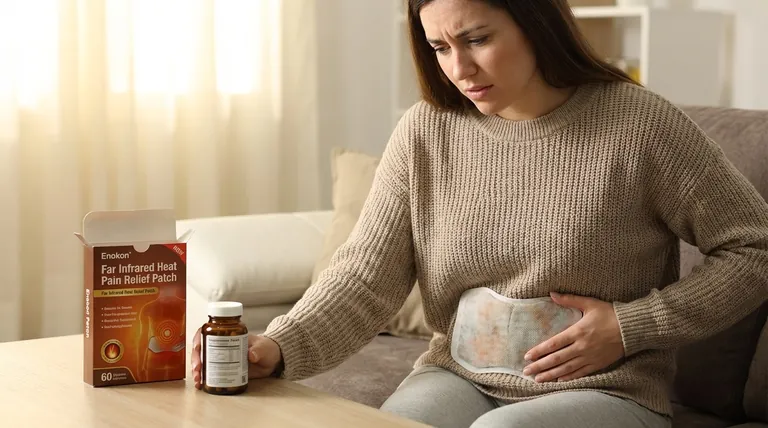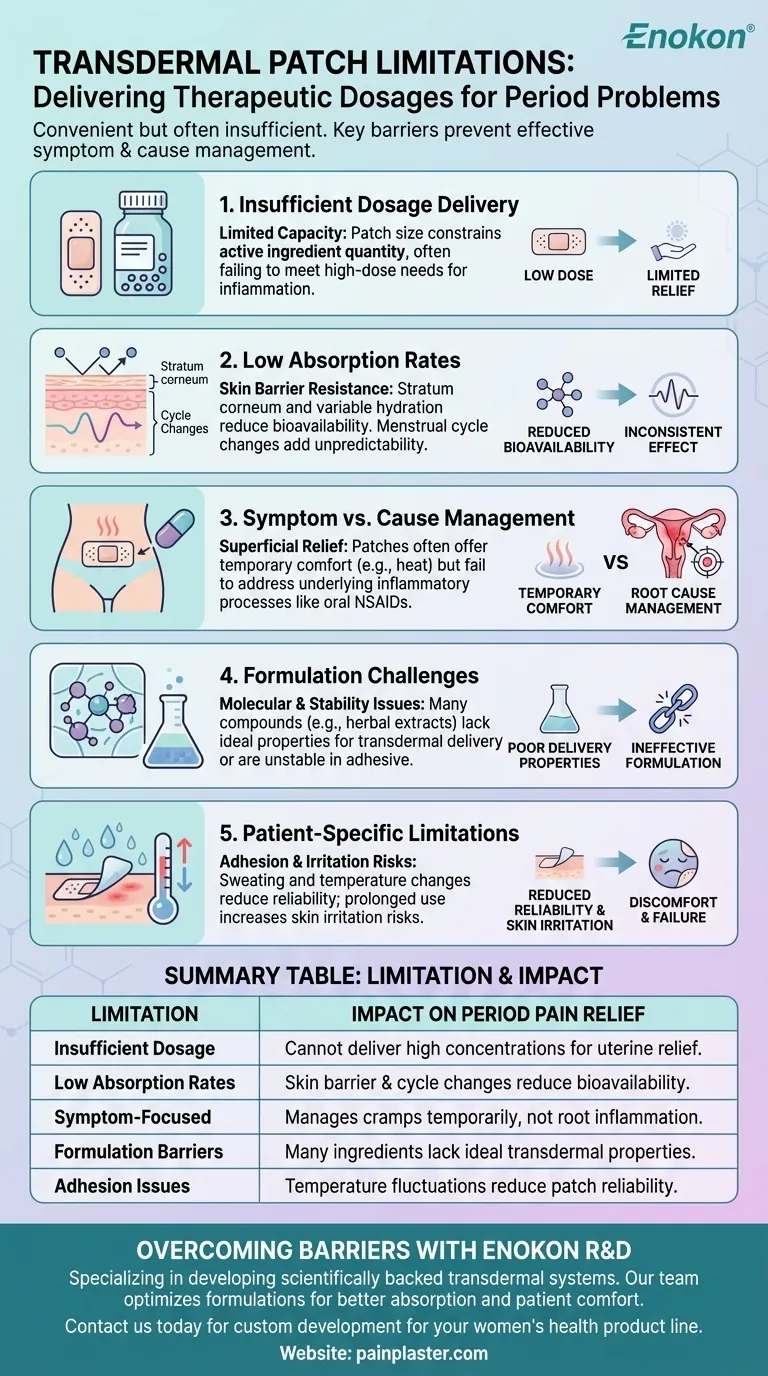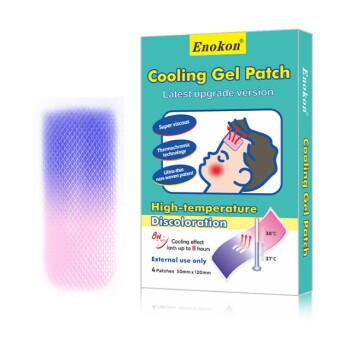Transdermal patches, while convenient and non-invasive, face significant limitations in delivering therapeutic dosages for period-related problems like pain and PMS. Key issues include low absorption rates, limited active ingredient capacity due to patch size, and inability to address root causes like uterine inflammation. Current research suggests oral supplements remain the only supported delivery method for effective relief.

Key Points Explained:
-
Insufficient Dosage Delivery
- Transdermal patches struggle to provide the high concentrations of vitamins, minerals, or herbs required for meaningful period pain relief.
- The physical size constraints of patches inherently limit the quantity of active ingredients they can carry.
- Example: Anti-inflammatory compounds needed to target uterine inflammation often require doses exceeding patch capacity.
-
Low Absorption Rates
- Skin barrier properties significantly reduce drug bioavailability compared to oral routes.
- Stratum corneum resistance and variable skin hydration levels further impair consistent absorption.
- Have you considered how menstrual cycle-induced skin changes might add unpredictability to absorption?
-
Symptom vs. Cause Management
- While heat patches offer temporary cramp relief, transdermal systems fail to deliver enough medication to address underlying inflammatory processes.
- Research shows oral NSAIDs remain superior for targeting prostaglandin-mediated uterine contractions.
-
Formulation Challenges
- Many period-relief compounds (e.g., magnesium, herbal extracts) lack optimal molecular properties for transdermal delivery.
- Stability issues arise when attempting to concentrate active ingredients within patch adhesives.
-
Patient-Specific Limitations
- Skin irritation risks increase with prolonged patch use during menstruation.
- Adhesion reliability decreases with body temperature fluctuations and sweating common during periods.
These limitations explain why transdermal patches currently serve better as adjuncts rather than primary therapies for menstrual discomfort. The technology quietly highlights the ongoing need for innovation in women's health delivery systems.
Summary Table:
| Limitation | Impact on Period Pain Relief |
|---|---|
| Insufficient Dosage | Cannot deliver high concentrations of anti-inflammatory compounds needed for uterine relief |
| Low Absorption Rates | Skin barrier reduces bioavailability; cycle-induced changes add unpredictability |
| Symptom-Focused | Only manages cramps temporarily, unlike oral NSAIDs targeting prostaglandins |
| Formulation Barriers | Many herbs/minerals lack ideal properties for transdermal delivery |
| Adhesion Issues | Body temperature fluctuations during periods reduce patch reliability |
Need advanced solutions for menstrual pain management?
At Enokon, we specialize in developing scientifically backed transdermal systems and collaborate with healthcare brands to overcome delivery limitations. Our R&D team optimizes formulations for better absorption and patient comfort.
Contact us today to discuss custom development for your women's health product line.
Visual Guide

Related Products
- Far Infrared Heat Pain Relief Patches Transdermal Patches
- Heat Relief Capsicum Patch for Lower Back Pain Relief
- Far Infrared Knee Pain Patch Heat Patches for Pain Relief
- Heating Pain Relief Patches for Menstrual Cramps
- Capsaicin Chili Medicated Pain Relief Patches
People Also Ask
- How does the Deep Heat Back Patch work? A Drug-Free Solution for Targeted Pain Relief
- What are the key features of the Deep Heat Pain Relief Back Patch? Get Up to 16 Hours of Drug-Free Relief
- What did the UK Million Women Study find regarding transdermal versus oral hormone therapy? A Safer Choice for Gallbladder Health
- What types of pain can the Deep Heat Pain Relief Back Patch be used for? Targeted Relief for Muscles & Joints
- Are heat patches safe for all body parts? Key Safety Zones and No-Go Areas Explained

















